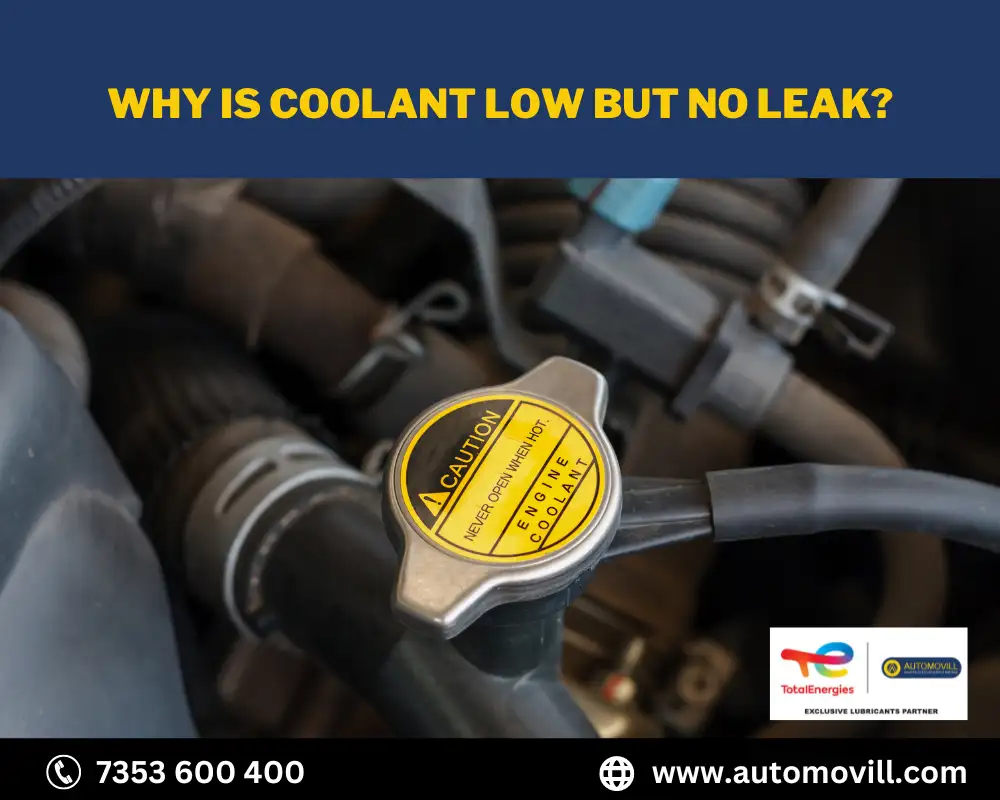
I understand your concern about the low coolant level in your car without any visible leaks. Sometimes it becomes quite annoying when there is a dip in engine performance because of low coolant levels.
Coolant is crucial for maintaining the optimal operating temperature of the engine. It plays a vital role in absorbing and dissipating heat to prevent engine overheating.
If you’ve noticed that your coolant level is consistently low, but you can’t find any visible leaks, you may be wondering what’s causing this issue.
Here are some simple reasons why this might be happening:
Reasons For Low Coolant when No Leak
1. Evaporation
Coolant, like any other liquid, can evaporate over time. Though this process is relatively slow, especially in a closed cooling system, it can lead to a gradual loss of coolant without any visible leaks.
Factors like high temperatures and extended use of the cooling system can accelerate evaporation. However, if you’re losing significant amounts of coolant frequently, evaporation alone may not be the sole cause.
2. Internal Leaks
Sometimes, coolant leaks can occur within the engine without any visible signs externally. These internal leaks can be caused by:
- Blown Head Gasket: A head gasket failure can allow coolant to seep into the combustion chamber or mix with engine oil, leading to low coolant levels without any visible external leaks.
- Cracked Engine Block: A cracked engine block may create passages for the coolant to escape internally, making it difficult to detect any leaks from the outside.
- Intake Manifold Leak: A faulty intake manifold gasket can cause coolant to leak into the engine, resulting in low coolant levels.
3. Radiator Cap Issues
Issues with the pressure cap on the coolant reservoir or radiator can lead to coolant loss:
- Defective Pressure Cap: A faulty cap may not maintain the proper pressure in the cooling system, resulting in coolant loss through evaporation or overflowing from the reservoir.
- Failed Seal: The cap’s rubber seal can deteriorate over time, allowing coolant to escape as vapor, again leading to a drop in coolant levels.
4. Air Pocket in the Cooling System
During coolant refills or certain maintenance procedures, air can get trapped in the cooling system. These air pockets can displace coolant and cause the level to appear low even when there are no leaks. Bleeding the cooling system properly can help eliminate air pockets and ensure the correct coolant level.
5. Coolant System Bleeding Issues
Improperly bleeding the cooling system after a coolant refill or maintenance can lead to inaccurate readings of the coolant level. Air trapped in the system can make it seem like there’s less coolant than there actually is.
6. Gradual Seepage
Certain components, such as hoses, clamps, and seals, can develop small, slow leaks over time. These leaks may be difficult to detect initially, but they can lead to a gradual loss of coolant over weeks or months.
Conclusion
Experiencing low coolant levels without any visible leaks can be concerning, but it’s essential to address the issue promptly to prevent engine damage from overheating.
Start by checking for any visible leaks, and if none are found, consider the possibilities of internal leaks, evaporation, cap issues, air pockets, or gradual seepage.
If you’re unsure about diagnosing the problem yourself, it’s best to seek the expertise of a qualified mechanic who can identify the issue and perform the necessary repairs to keep your cooling system in top condition.
Regular maintenance and inspections are essential to ensure your vehicle’s cooling system functions optimally and protects your engine from potential damage.
